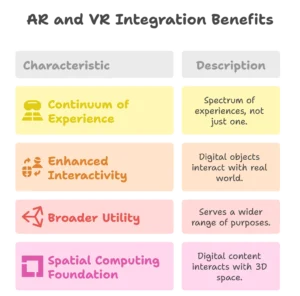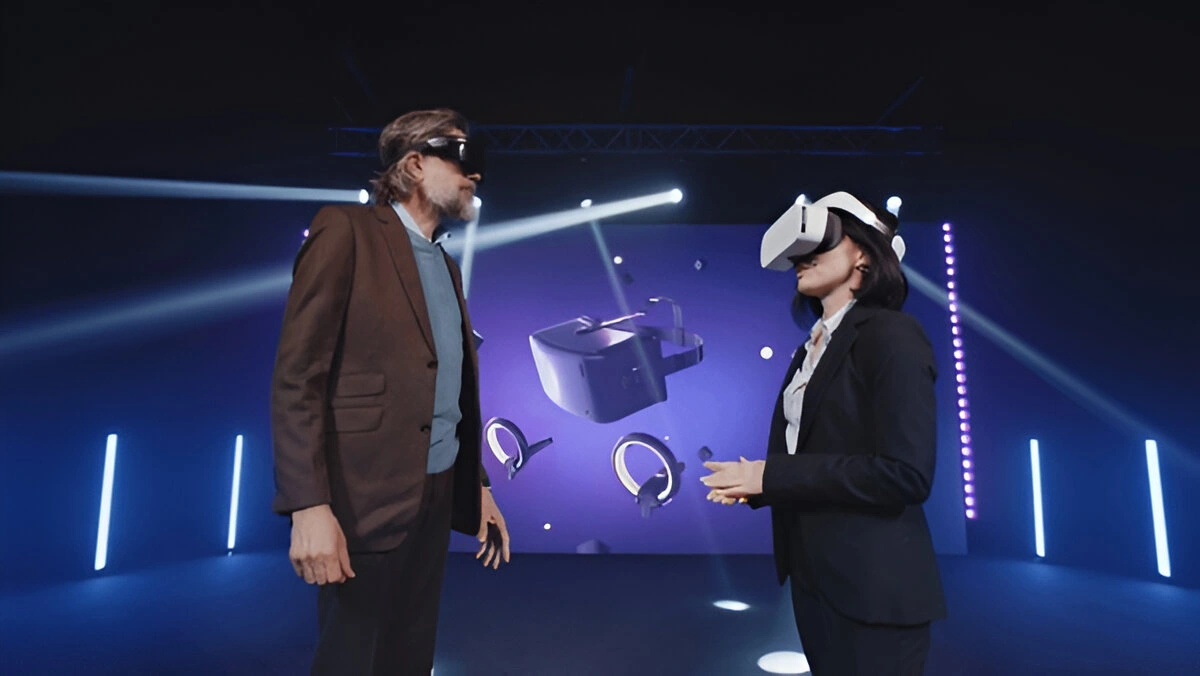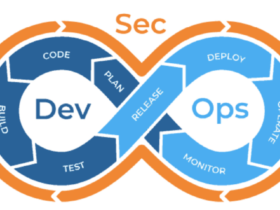The pursuit of more immersive and intuitive digital experiences has led to a technological frontier where the physical and virtual worlds increasingly converge. At the heart of this evolution lies AR and VR Integration, the powerful synergy between Augmented Reality (AR) and Virtual Reality (VR) that is fundamentally reshaping how we interact with information, each other, and our environments. As of mid-2025, this integration is moving beyond niche applications, fostering entirely new paradigms in everything from professional training and healthcare to entertainment and collaborative design, promising an unprecedented level of immersion and utility that bridges the gap between digital content and real-world perception.
Understanding AR and VR : Distinct Yet Converging Realities
Before diving into their integration, it’s essential to understand the core characteristics that define Augmented Reality (AR) and Virtual Reality (VR). While both aim to enhance human perception, they do so in fundamentally different ways.
- Virtual Reality (VR): VR creates a fully immersive, simulated environment that completely replaces the user’s view of the real world. Users typically wear a head-mounted display (HMD) that blocks out physical surroundings, transporting them into a digital space. VR is about creating new, entirely virtual worlds for exploration, training, or entertainment.
- Examples: VR gaming (e.g., Half-Life: Alyx), virtual training simulations for surgeons or pilots, immersive virtual tours.
- Augmented Reality (AR): AR overlays digital information, graphics, and sounds onto the user’s view of the real world. Unlike VR, AR does not replace reality but enhances it, allowing users to interact with virtual objects as if they were physically present in their actual environment.
- Examples: Pokémon Go, Snapchat filters, AR navigation apps, industrial maintenance overlays on equipment, architectural visualization.
Here’s a quick comparison :
The true power emerges when these two distinct approaches are integrated, leading to a spectrum of mixed reality experiences.
The Power of AR and VR Integration : Blurring Realities
AR and VR Integration refers to the development and deployment of solutions that combine elements of both augmented and virtual realities, often within a single device or a coherent ecosystem. This convergence creates “Mixed Reality” (MR) experiences that can dynamically blend virtual objects with the real world, allowing for a seamless transition between full immersion and augmented perception.
The significance of this integration lies in :

- Continuum of Experience: Instead of being confined to one extreme (fully virtual or purely augmented), integrated systems can offer a spectrum of experiences. A user might begin in a VR training environment, then transition to AR mode to apply what they’ve learned to a real physical object.
- Enhanced Interactivity: Digital objects can not only be overlaid but can also interact with the physical environment and respond to real-world conditions, creating truly dynamic and context-aware applications.
- Broader Utility: Integrated solutions can serve a wider range of purposes. A single device could be used for immersive gaming, collaborative virtual meetings, and then switch to AR mode for navigation or real-time information display.
- Spatial Computing Foundation: This integration is a cornerstone of “spatial computing,” where digital content understands and interacts with the 3D space of the real world, enabling more intuitive and powerful human-computer interactions beyond traditional screens.
Devices like Meta Quest Pro and Apple Vision Pro exemplify this trend, offering advanced passthrough capabilities that effectively allow users to switch between immersive VR and AR experiences, highlighting the growing significance of AR and VR Integration.
Key Applications Across Industries
AR and VR Integration is already making significant inroads across various sectors, demonstrating its versatility and transformative potential.
These applications demonstrate how AR and VR Integration is not just about entertainment but about creating practical, efficient, and deeply engaging solutions for real-world problems.
Benefits of Integrated AR and VR : A New Dimension of Value
The combined strengths of AR and VR unlock a unique set of benefits that go beyond what each technology can achieve individually.
- Enhanced Immersion and Engagement: By allowing seamless transitions between fully virtual and augmented views, integrated systems provide a more profound sense of presence and interactivity, leading to higher engagement in training, entertainment, and collaboration.
- Realistic Training and Skill Development: VR provides safe, repeatable environments for high-fidelity training, while AR allows for immediate application and reinforcement of learned skills in real-world contexts, bridging the “knowledge-to-action” gap.
- Improved Collaboration and Communication: Distributed teams can collaborate in shared virtual spaces (VR) to review 3D models or strategies, then switch to AR to project those models onto physical objects, facilitating clearer communication and problem-solving.
- Increased Efficiency and Productivity: Workers can access contextual information and guidance (AR) directly in their field of view, reducing errors, speeding up tasks, and minimizing the need for physical manuals or external screens.
- Cost Reduction and Risk Mitigation: Training in virtual environments reduces the need for expensive physical prototypes, travel, and minimizes risks associated with dangerous real-world scenarios.
- Personalized and Contextual Information: AR overlays can deliver just-in-time information relevant to the user’s immediate physical surroundings and current task, leading to more intelligent and adaptive workflows.
- Breakthroughs in Design and Prototyping: Designers can rapidly iterate on product designs in virtual reality, then physically interact with virtual prototypes in augmented reality, accelerating the design cycle and reducing physical prototyping costs.
These benefits make AR and VR Integration a powerful tool for driving innovation and competitive advantage across diverse sectors.
Challenges in AR and VR Integration
Despite the immense promise, the widespread adoption and seamless AR and VR Integration face several significant hurdles.
- Hardware Limitations and Cost :
- Weight & Form Factor: Current HMDs can still be bulky, heavy, and less comfortable for extended use, especially AR glasses which need to be aesthetically pleasing and lightweight.
- Processing Power & Battery Life : Running complex AR and VR experiences locally demands significant processing power and drains batteries quickly.
- Cost: High-end integrated headsets remain expensive, limiting mainstream consumer adoption.
- Content Creation Complexity:
- Development Skills: Creating compelling AR and VR content requires specialized 3D modeling, spatial computing, and game development skills, which are still in high demand and short supply.
- Authoring Tools: While improving, user-friendly tools for rapidly creating and deploying integrated AR and VR experiences are still evolving.
- 3D Content Pipeline: Converting existing 2D content or creating new 3D assets optimized for AR and VR environments is a time-consuming process.
- User Experience (UX) and Usability:
- Motion Sickness: Some users experience motion sickness or discomfort in VR, though advancements are mitigating this.
- Intuitive Interaction: Designing natural and intuitive ways to interact with digital content in 3D space (gestures, eye-tracking, voice) is complex.
- Field of View (FOV): Limited FOV in some AR devices can hinder immersion and utility.
- Network Infrastructure:
- Latency: For cloud-rendered AR/VR (offloading processing to the cloud), ultra-low latency is critical to avoid motion sickness and maintain real-time interaction, requiring robust 5G or fiber networks.
- Bandwidth: Streaming high-fidelity immersive content demands significant bandwidth.
- Ethical and Societal Concerns:
- Privacy: Collection of vast amounts of spatial data and biometric information raises significant privacy concerns.
- Digital Divide: The cost of hardware and connectivity could exacerbate existing digital inequalities.
- Impact on Reality Perception: Long-term effects of pervasive mixed reality on human perception and interaction with the physical world are still being studied.
Overcoming these challenges requires continued innovation in hardware, software, and a thoughtful approach to user experience and ethical design. For discussions on future challenges and solutions in immersive technologies, resources like the IEEE VR conference proceedings offer deep insights from academic and industry research.
The Future of Immersive Technologies
The trajectory of AR and VR Integration is towards an increasingly seamless, ubiquitous, and powerful blend of our digital and physical realities.
- Pervasive Smart Glasses: As form factors shrink, processing power increases, and battery life improves, lightweight and fashionable AR glasses will become commonplace, integrating digital information seamlessly into daily life. These will likely be the primary interface for everyday mixed reality.
- Spatial Computing Ecosystems: Major tech companies are investing heavily in creating robust spatial computing platforms that will allow developers to build applications that understand and interact with the real world’s 3D geometry. This will lead to an “app store” for reality itself.
- Neuro-Interfaces and Advanced Input: Future interactions might involve brain-computer interfaces (BCIs) or highly advanced gesture recognition, making interactions with digital content even more intuitive and less reliant on physical controllers.
- AI-Powered Immersion: Artificial intelligence will play an even greater role in creating dynamic, personalized, and context-aware AR/VR experiences, from generating realistic virtual environments to powering intelligent virtual assistants that interact with both real and digital objects.
- The Enterprise and Industrial Metaverse: Beyond consumer entertainment, the deepest impact may be felt in enterprise, with virtual twins, remote operational hubs, and real-time AR guidance becoming standard in industrial settings.
- Interoperability and Open Standards: As the industry matures, there will be a push for greater interoperability between different AR/VR platforms and devices, allowing content and experiences to be shared more freely.
The future envisions a world where the boundaries between digital and physical become increasingly fluid, enabling new forms of work, education, communication, and entertainment driven by intelligent and integrated immersive technologies.
The convergence of Augmented Reality and Virtual Reality into a cohesive AR and VR Integration paradigm is unlocking unprecedented potential across a myriad of industries. By offering a spectrum of immersive experiences that enhance training, streamline collaboration, and revolutionize design, these technologies are proving their worth far beyond entertainment. While challenges related to hardware, content creation, and user experience persist, the continuous advancements and strategic investments in this field underscore its transformative power. The journey towards a truly integrated mixed reality future is complex but promises a more intuitive, efficient, and deeply engaging interaction with our digital world.
Eager to explore more about how cutting-edge technologies like AR/VR are shaping our future? Dive into our expert insights and the latest news on our platform at jurnalin!










اترك رد